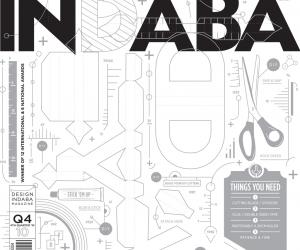First Published in
In Eric S Raymond’s seminal book, The Cathedral and the Bazaar, the author ticks through the discoveries he made writing open source software.
Some of them seem like the height of geekdom and as far removed from the world of design as one can imagine. For example, Raymond wrote, “Treating your users as co-developers is your least-hassle route to rapid code improvement and effective debugging.”
Stripping away the technical jargon, however, reveals the essential lesson: Trusting the people who use your work to work with you makes things easier and better.
Raymond’s sentiments have echoed across the world and into a fascinating and emerging design field: Games. One of the most collaborative projects a designer can take on, even a simple game requires many different specialties, all organised around one goal. And taking the open source path has its advantages.
“Every one of my projects has used open source work from other developers, and I've seen a lot of projects that used my work as well,” says Christopher Plush, one of the designers behind the open source game, Yo Frankie! “It's a mutual respect thing, and it's great.”
Yo Frankie! (www.yofrankie.org) is a project organised by the Blender Foundation, a non-profit organisation that maintains and improves on the open source Blender 3D-design tool (blender.org). According to the foundation, “The purpose [of Yo Frankie!] was to not only make a compelling 3D game experience, but especially to improve and validate the open source 3D game creation pipeline.”
As a result, the openness of both the tool and the game itself created practical benefits for the game designers.
“I'm not an open source zealot,” says Plush, “but do tend to lean that way because of how advantageous it can be. I like Blender because of how quickly I can work with it... Also, being able to nag the developers directly to fix or add something I need, frequently comes in handy.”
“By making my creations open source, in turn I'm contributing back to the broad pool of knowledge and tools,” says Richard Jones, founder and maintainer of the PyWeek open source game competition (pyweek.org). “This includes contributing to the projects that create some of the software I use.”
The PyWeek competition, though it lacks sponsorships or even monetary prizes, has spawned dozens of unusual new games that use and contribute to open source tools. And all of them are created in less than one week’s time.
“I've had a long and close relationship with the open source community,” Jones goes on. “The strength of the community varies by project, but even on the weaker ones there's still someone occasionally popping up to throw in some new code or contribute some fixes.”
Another expression of the open source way of working comes from Raymond’s dictum, “Release early, release often.” The phrase encourages game makers to abandon perfection and put their creations before the public as quickly as possible.
“It's always been an essential to me to rough things out first and release an early product for feedback,” concurs Plush. “The hardest part is putting aside the artist ego and perfectionist attitude to release something unfinished.”
“The group of designers and developers that I work with have an expression that we use to discuss our style of getting things done – ‘Fuck it, we’ll do it live!’,” says Jim Babb, co-creator of the alternate-reality game (ARG), Socks Inc (www.socksinc.com). “This is indicative of our belief that, sometimes, it is more important to get things done than to spend all day devising the perfect plan. A game, no matter how great, is not a game until it is playable.”
Babb, along with Daniel Grace and several other designers and developers, built Socks Inc as an unusual mix of real-world puppetry and online media creation. The play of the game itself reflects the freewheeling, lo-fi sensibilities of the open source movement.
“Socks Inc is about having ‘handcrafted fun’ digitally,” Babb explains. “Using your hand skills to build a puppet, animating it with your personality, and then displaying it digitally. Combining these experiences enhances each phase dramatically. This is the aim of the aesthetic; a combination of a handcrafted feel, imaginative possibilities and digital experience.”
Even with its financing, Socks Inc used an open model. To get the game off the ground, the team used Kickstarter, a website dedicated to artists raising funds from the community (kickstarter.com). Socks Inc raised $7 357 from 123 people after setting a goal of only $6 000. As a result, the game was able to appear at the renowned Indiecade independent games festival in October 2010.
But not every instance of working with open source ideals goes as smoothly.
“One of the major pitfalls is lack of direction, since there's a different hierarchy of control in open source projects, one of a much thinner fabric than commercial projects,” Plush points out. “I imagine this is why so many open source projects fail miserably."
He continues: “I honestly don't play any open source games. I don't think there's a decent one out there. There have been awesome open source movies though, but when it comes to a game project it makes things painfully obvious how difficult that kind of endeavour is still in an open community. I've seen plenty of awesome open source demos showcasing features and everything and they're fantastic, so the capabilities are there with open source software. There's just been no group with enough resolve to make something good with it all. When you take the typical idea of profit out of the equation, you take away a lot of motivation to see something through to the end.”
“The greatest benefit of the open source community is the sharing of ideas and code from so many different people,” Jones highlights. “The danger is that most open source projects are run as a hobby and often the originator of the project will hit a point where they no longer feel enthusiastic about it. I have several such projects that I no longer actively run.”
Not all is lost, though. There is one final lesson to take from Raymond, which he in turn pulls from the great management writer, Fred Brooks. It is: “Plan to throw one away; you will anyhow.”
“The code is out in the world... and anyone is able to take the code and improve it,” Jones enthuses. “The code will never die if there is some use for it.”
“I don't think that handing a big ball of code, such as what's behind Socks, to the community as is would help anyone,” Grace elaborates. “However, extracting individual problems that plague every ARG as stand-alone solutions would do a lot to keep everyone from reinventing the wheel without stifling creativity.” And it is precisely that careful balance of sharing and creativity that powers the new, weird, fragile open source world of game design.













